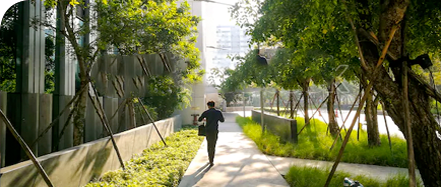Areas of innovation


Innovation Challenge Areas
Over 250+ urban mobility challenges were identified by cities across Europe. These challenges were reworked into 9 wider “Challenge Areas”.
Each year a work programme is developed with a focus on a number of the innovation challenge areas
Activities

Active Mobility
This area aims to increase active mobility
in partner cities. This would include a modal shift from private motorised vehicles to active mobility showing a decrease in noise and air pollution and increasing healthy city living.

Intermodality
This area aims to drive better use of existing mobility services and facilitate the integration of new solutions, business models and mobility modes. This includes increasing interconnectivity and accessibility of, and between, mobility modes and networked hubs.

Mobility infrastructure
This area aims to promote innovation and improvement in mobility infrastructure and the built environment. This covers architecture and urban planning, community co-design, and use of innovative materials.

Mobility for all
This area aims to improve physical and geographic accessibility for target groups and vulnerable travelers. The universal service obligations of public transport should be reflected in design, testing and adoption of new mobility solution, services and products.

Sustainable city logistics
This area aims to improve urban services, goods delivery and waste management operations through logistics, future vehicle design, behavioural and technological innovations.

Creating public realm
This area will improve the design, use and management of public spaces, and reduction of space allocated to vehicles. Curbside design with variable and modular use will be considered as well permanent takeback of public space.

Future mobility
This area promotes digital technologies such as artificial intelligence, 5G, sensors and smart infrastructure. These technologies enable the mobility innovation, such as Mobility as a Service (MaaS), Collaborative – Intelligent Transport Systems (C-ITS), Connected Autonomous Vehicles (CAV) and Internet of Things (IOT), to improve mobility operations and safety.

Mobility and energy
This area support the replacement of Internal Combustion Engines (ICE) with cleaner fuel-propulsion solutions requires new vehicle technologies, retro-fitting, charging/refuelling, and balancing supply/ demand balance.

Pollution reduction
This area aims to lower levels of urban
mobility-related air and noise pollution, provide mitigation actions, reduce greenhouse gas emissions and increase urban life quality of life.
This also includes reductions in particulate matter (PM2.5 and PM10), volatile organic compounds (VOC), nitrogen oxides, sulphur dioxide, carbon monoxide, and black carbon.
